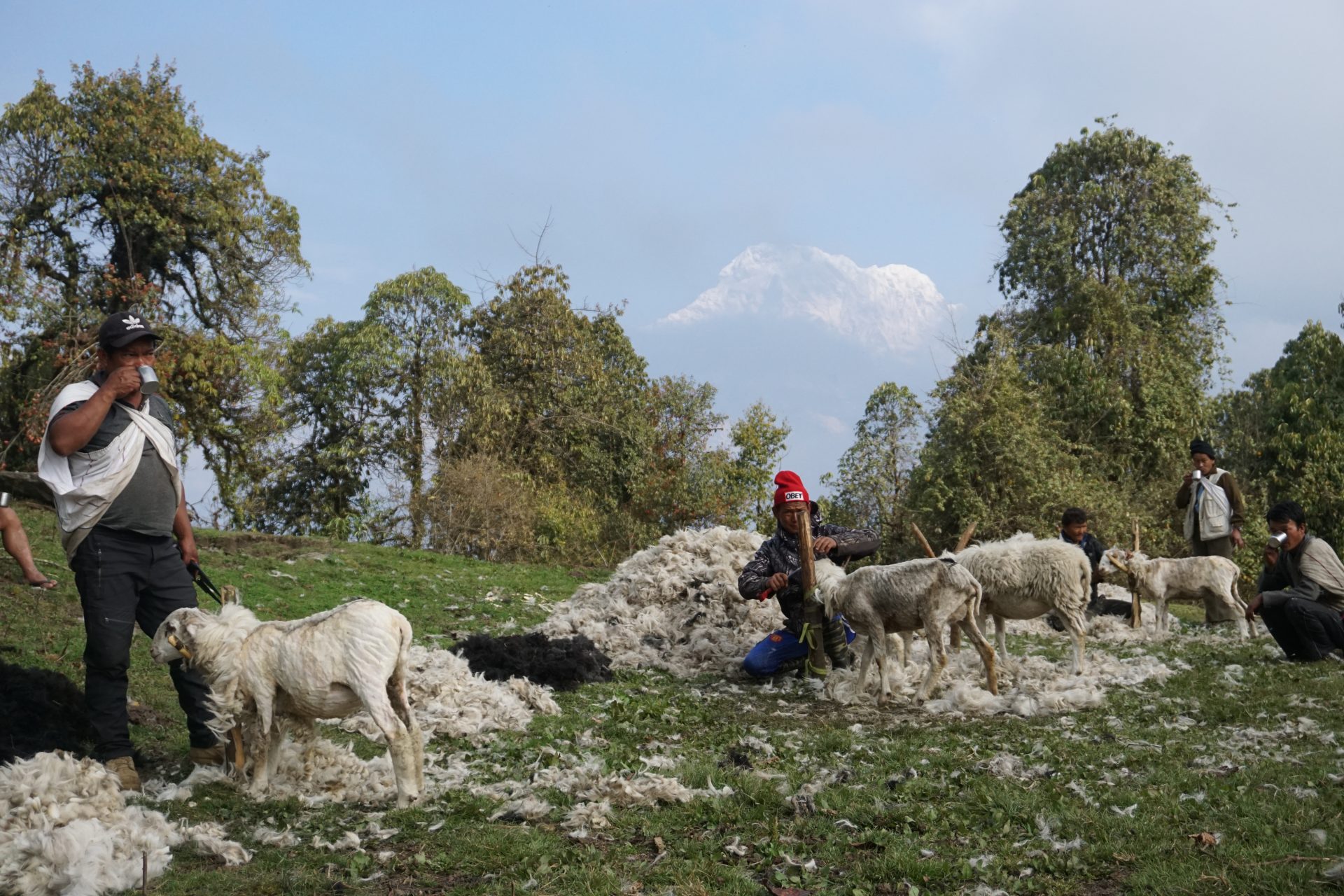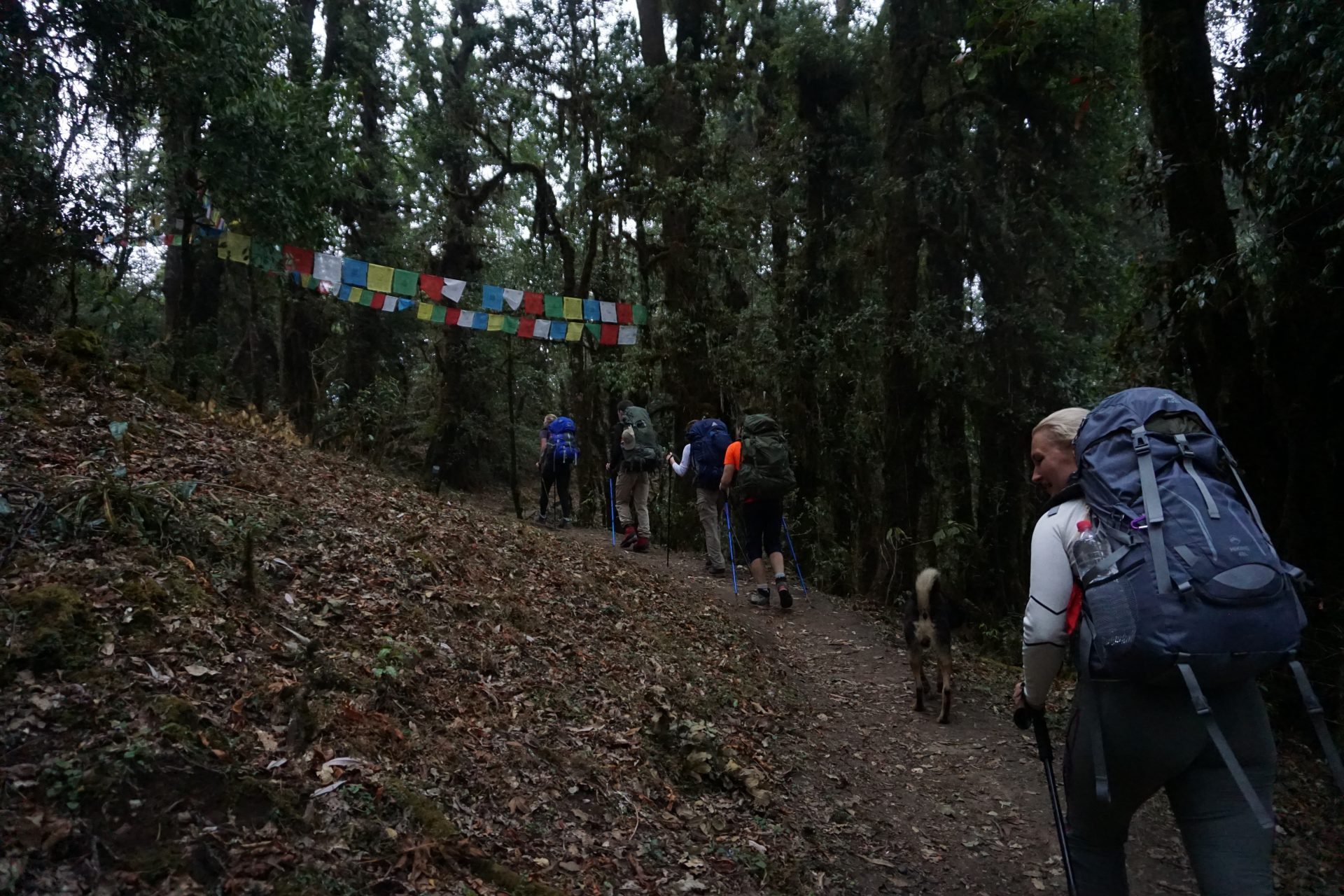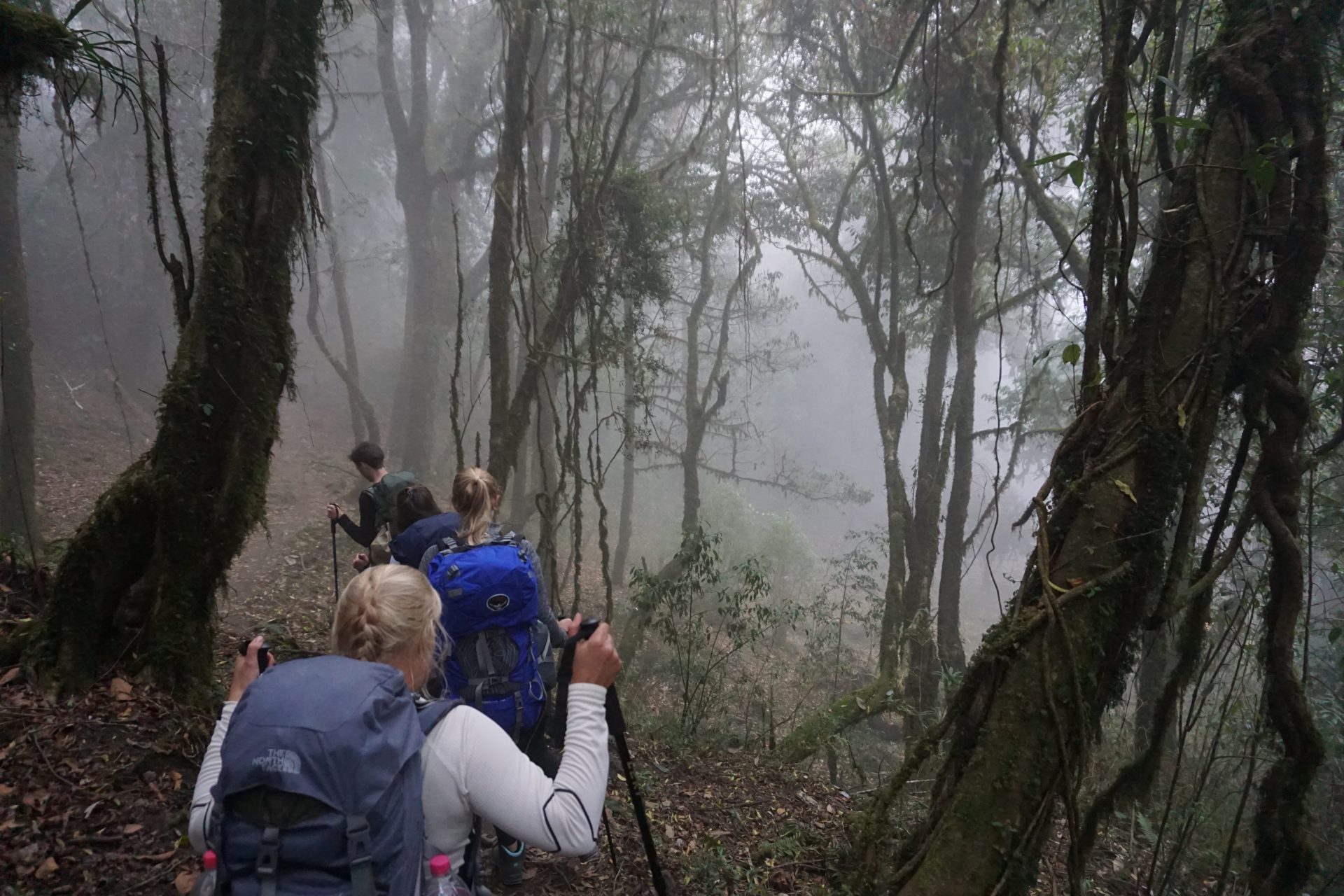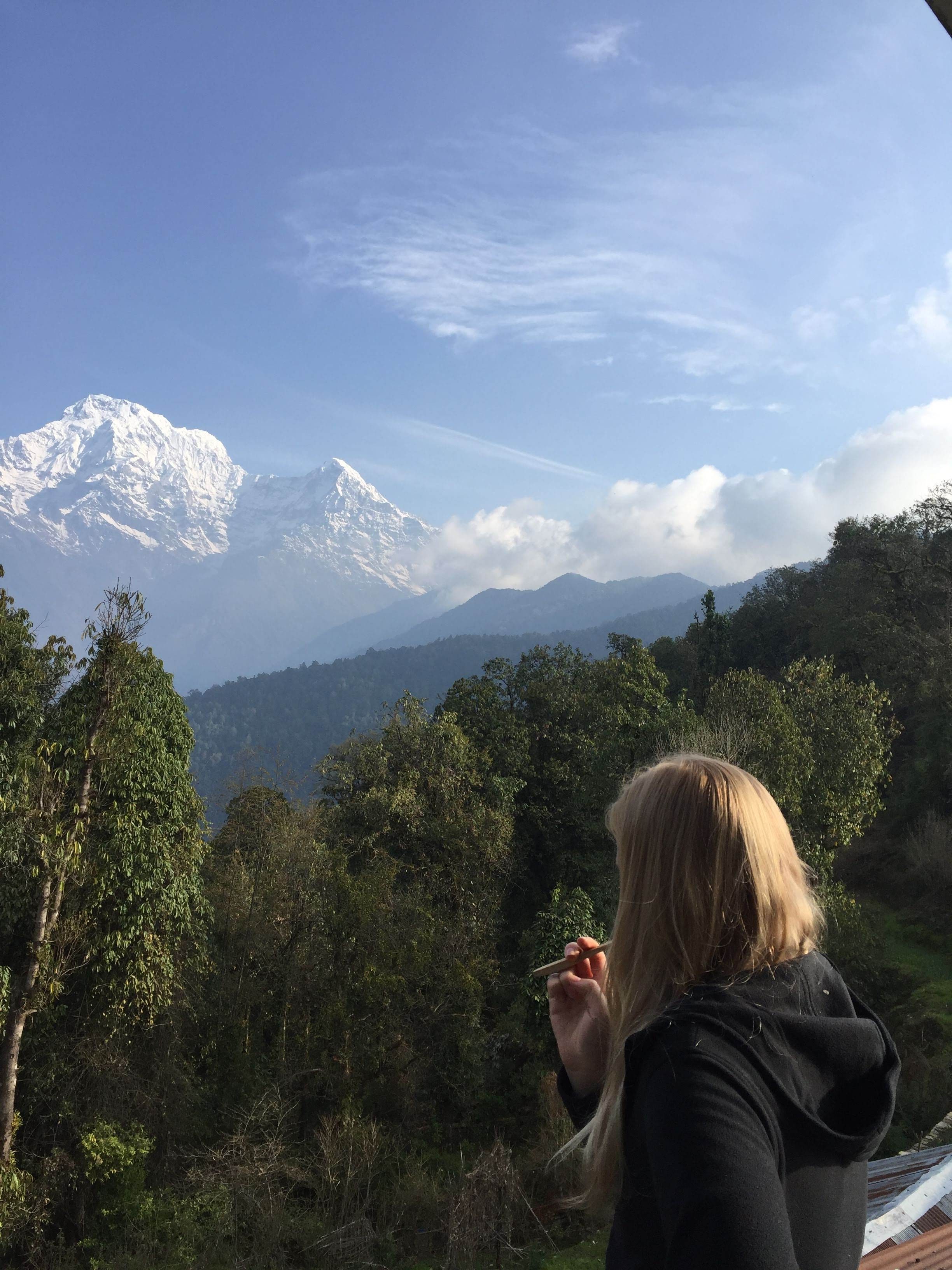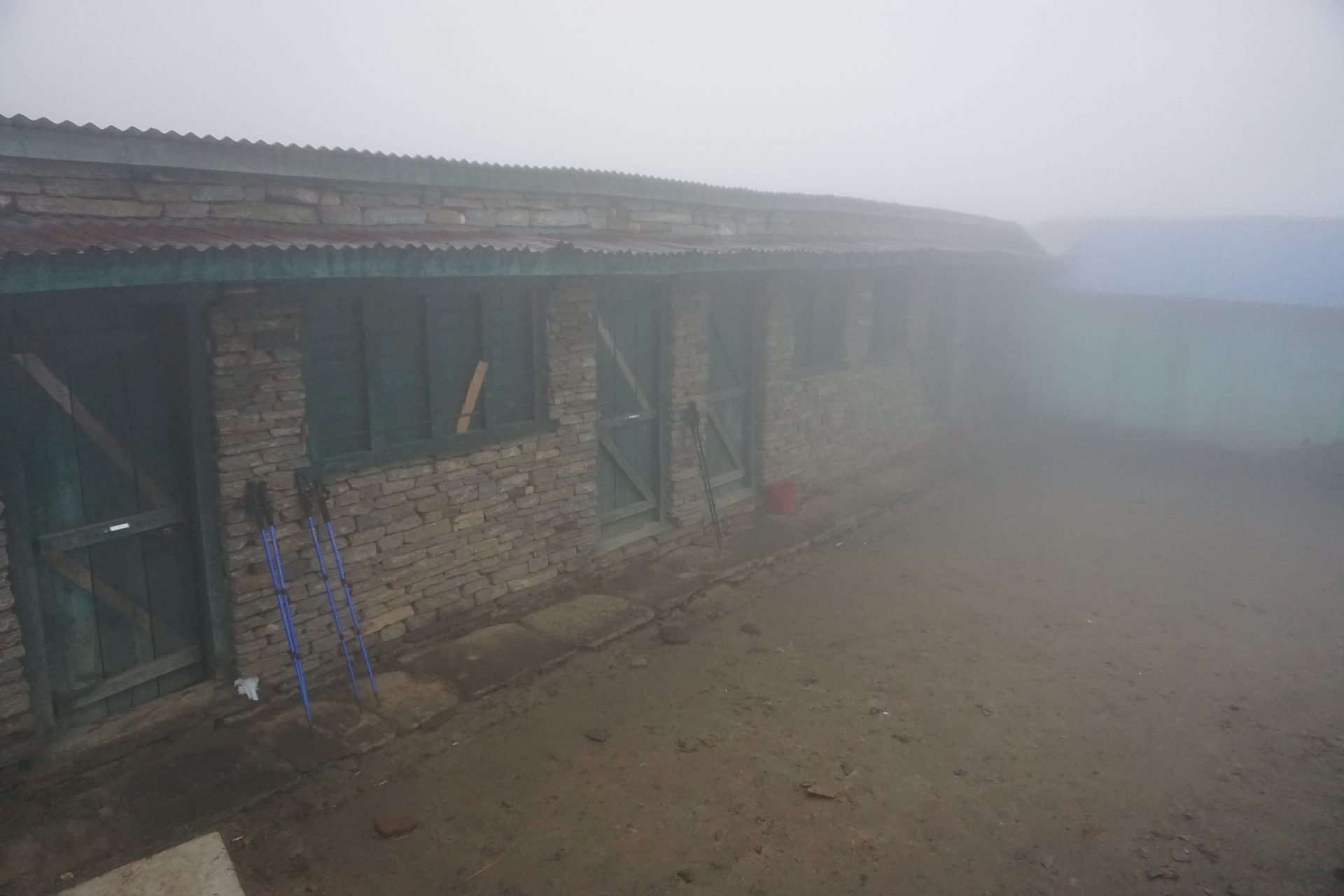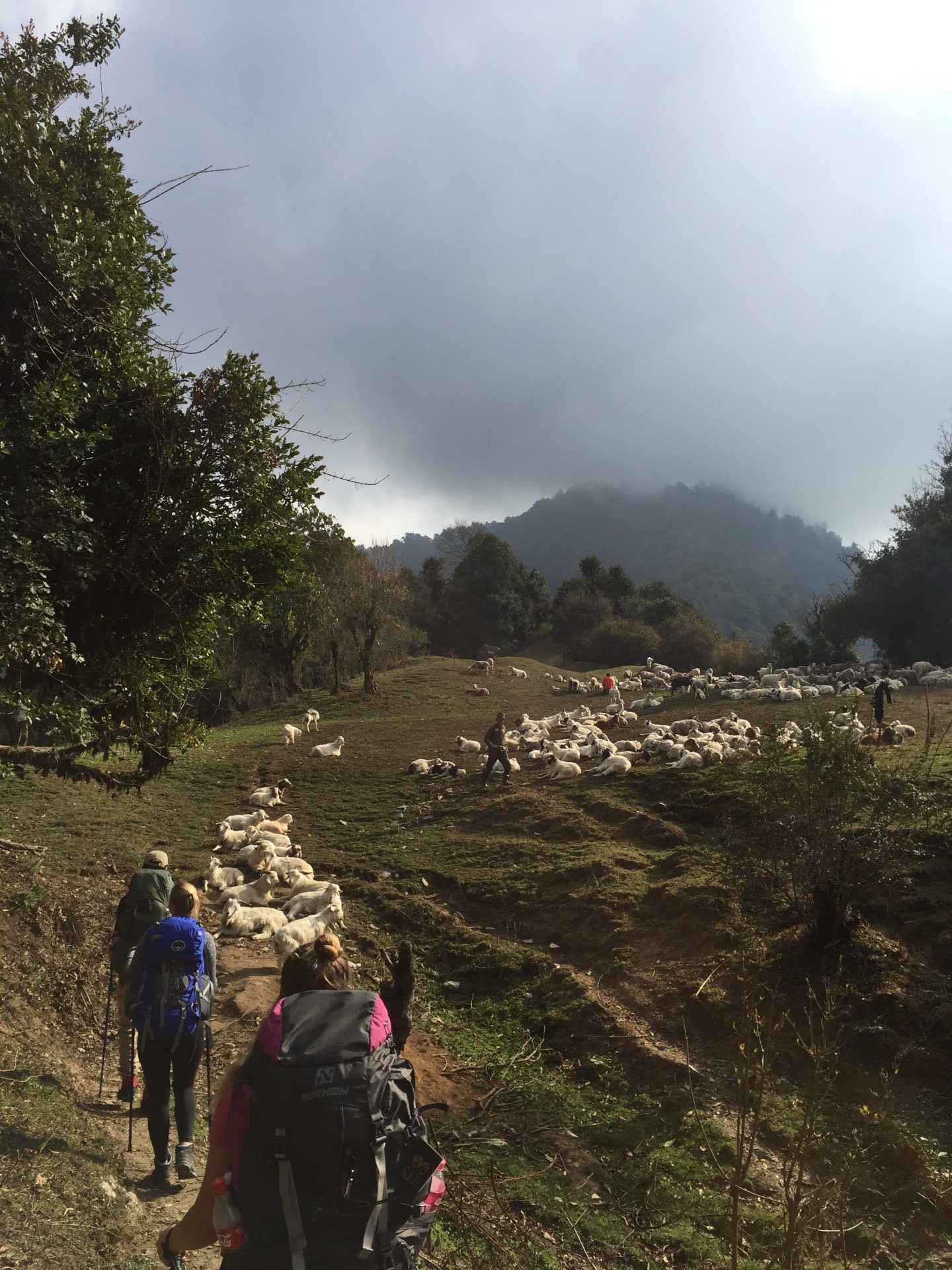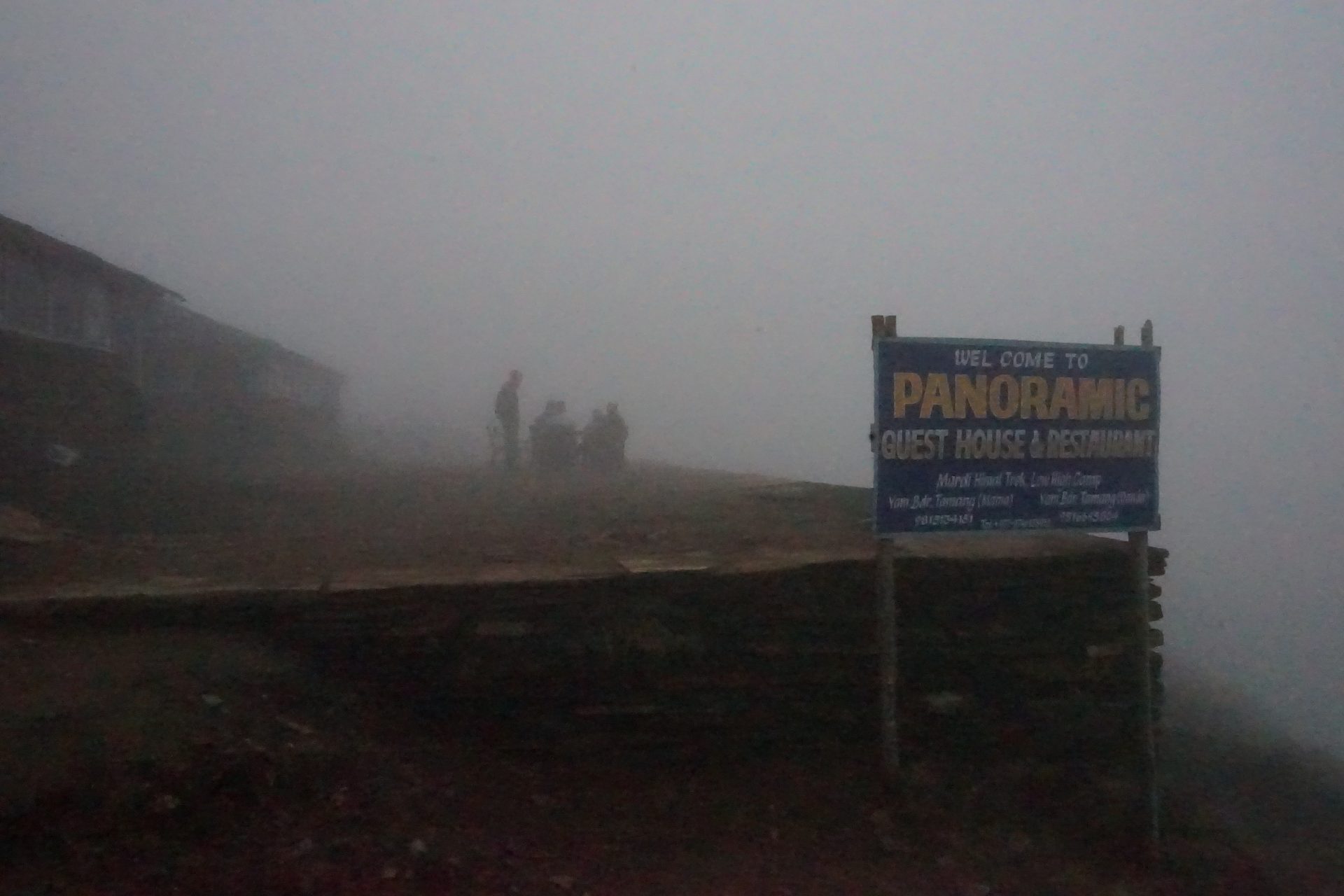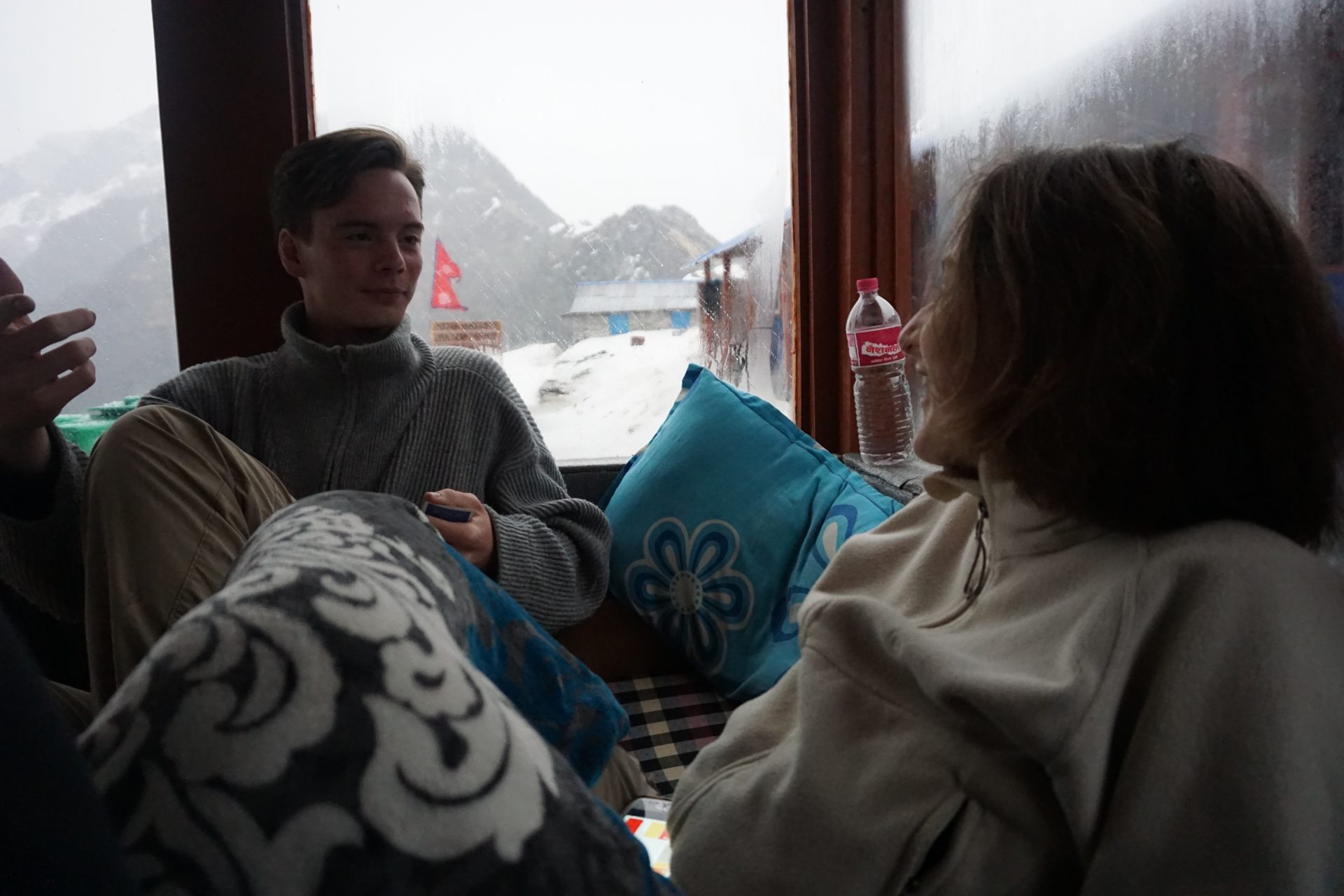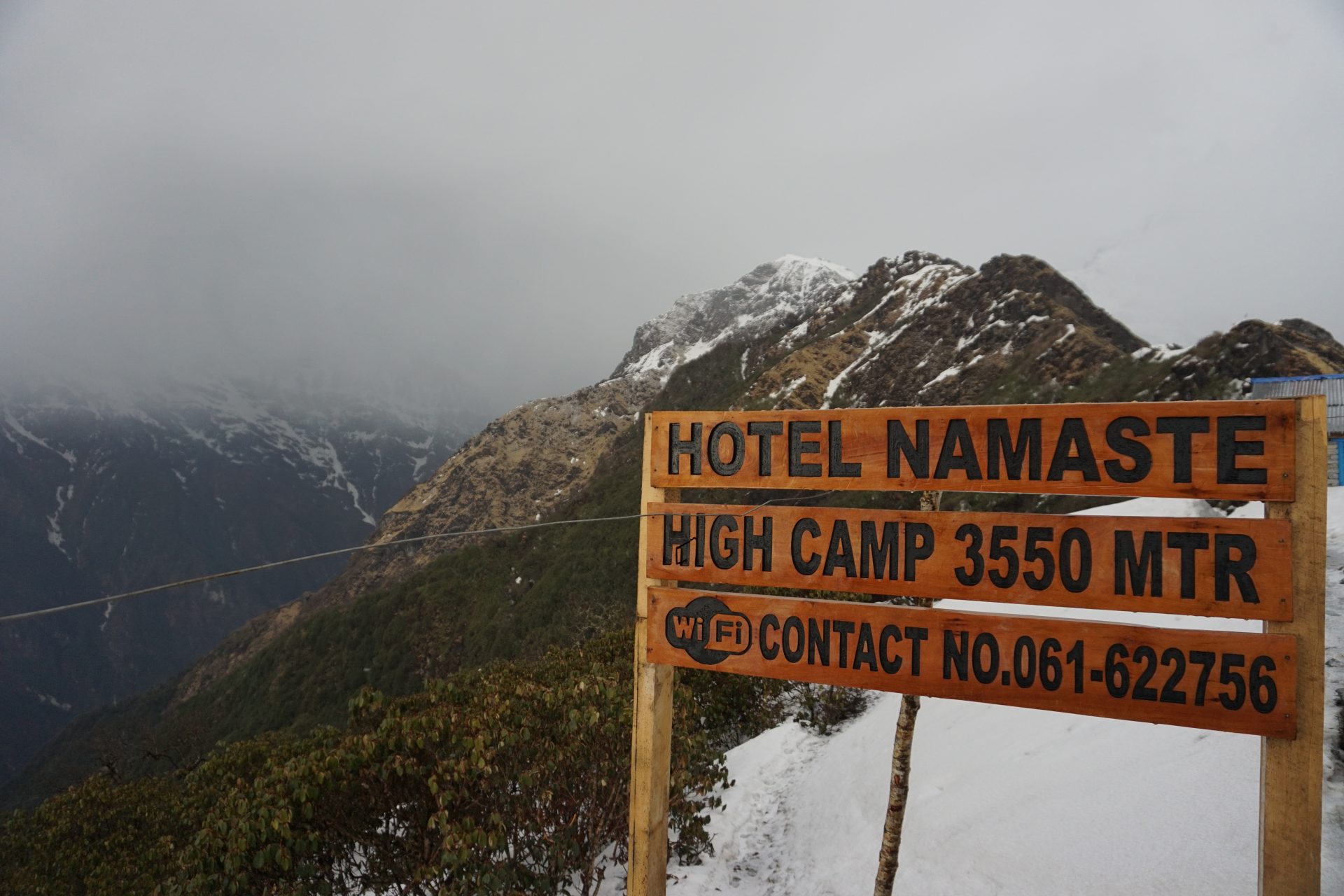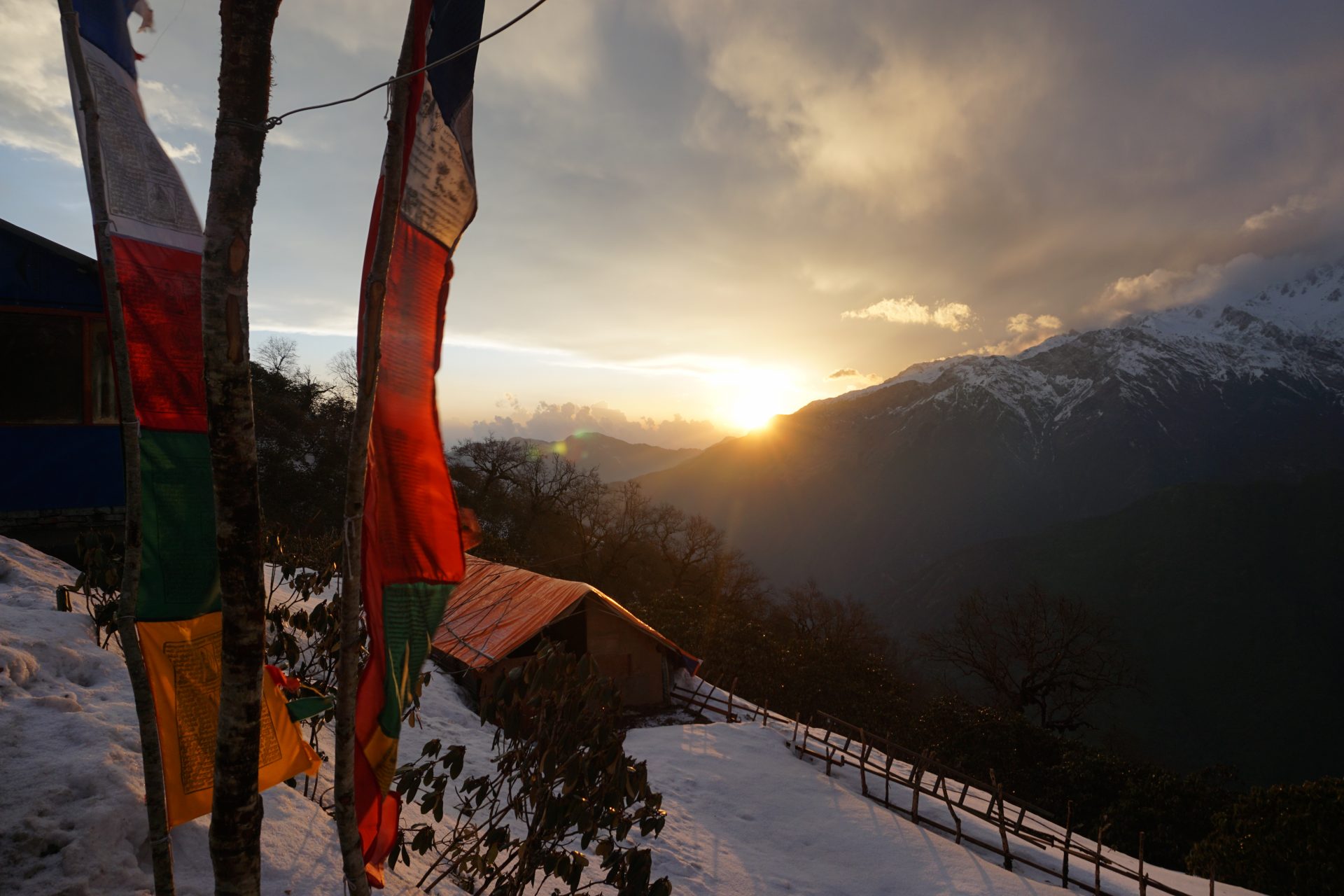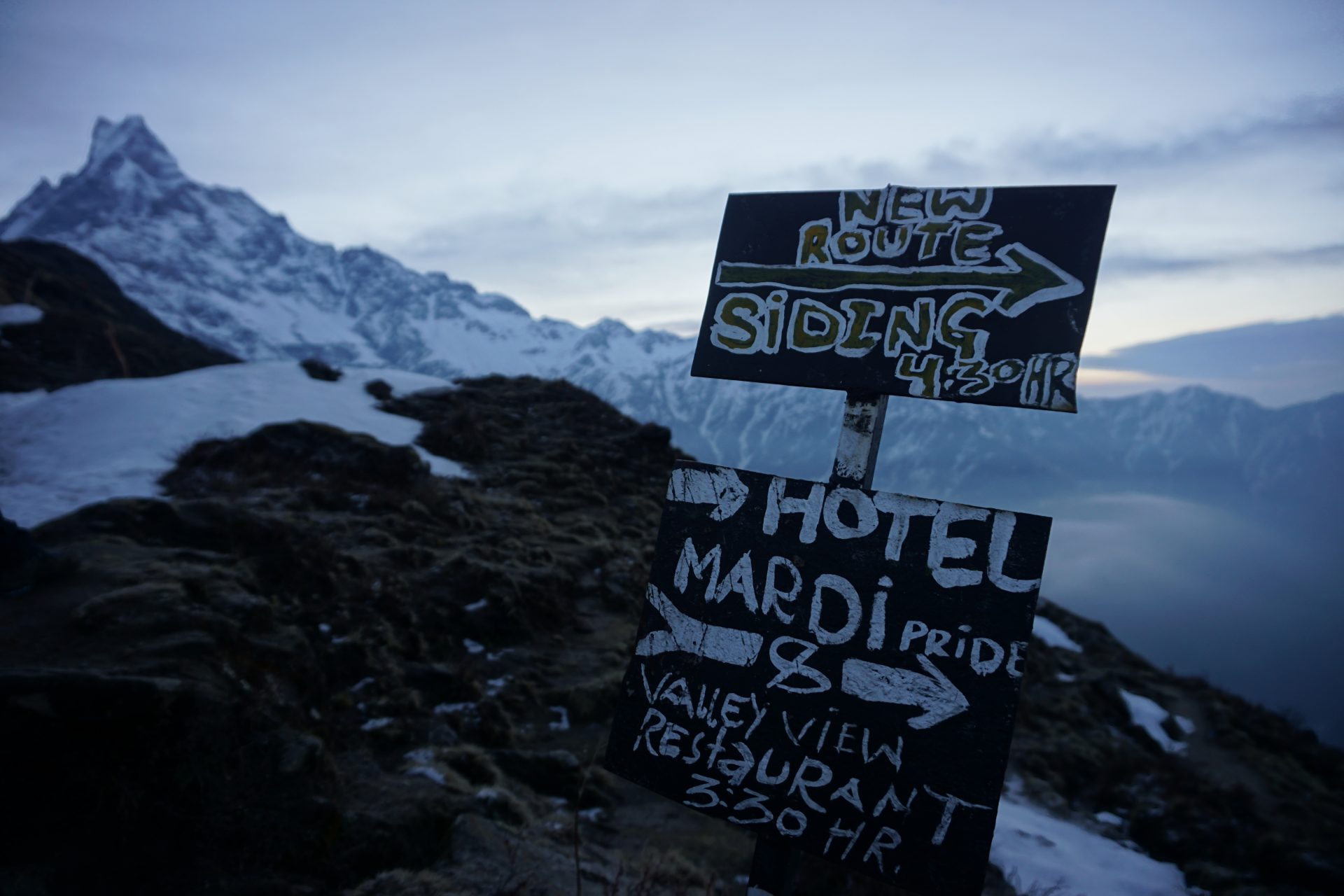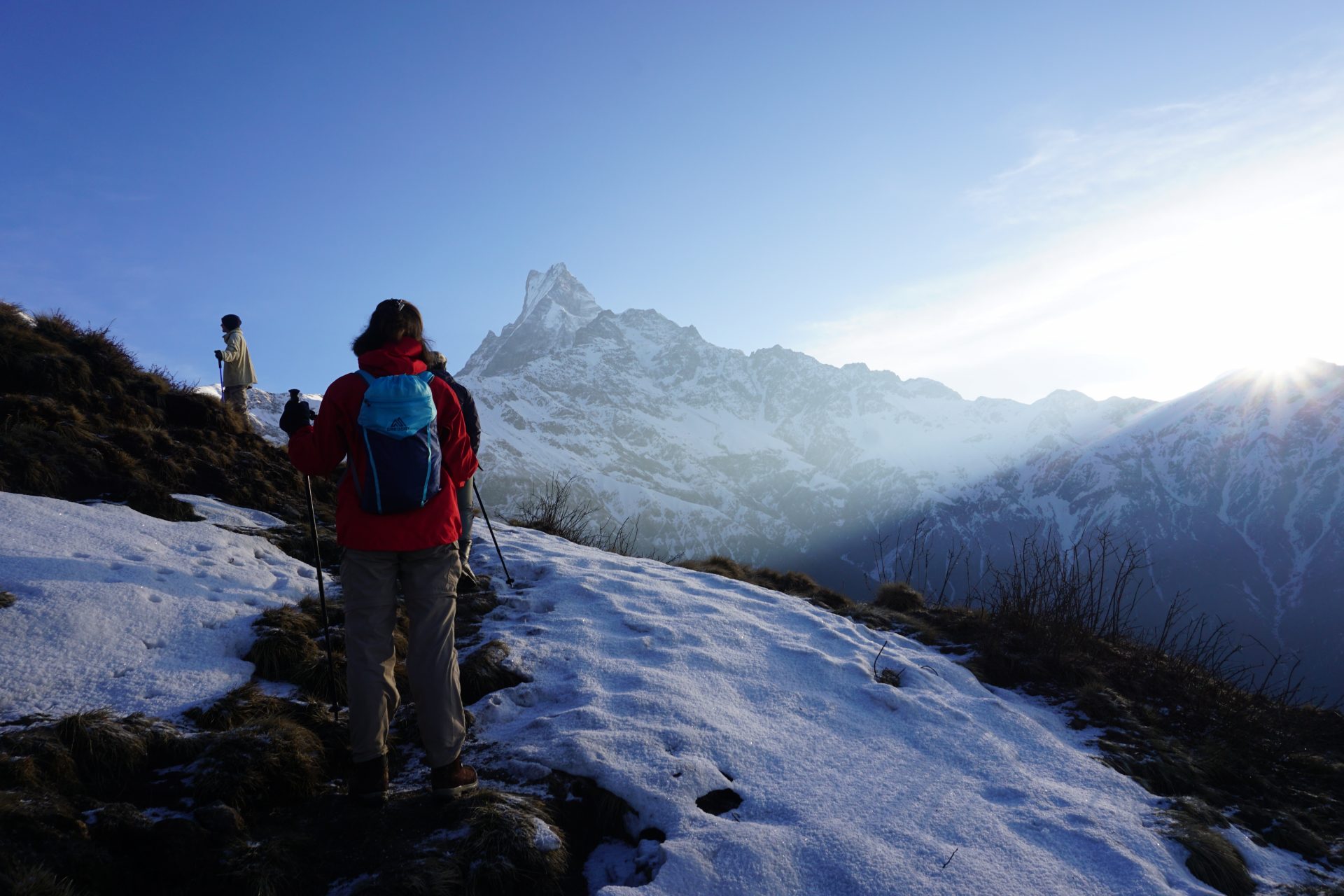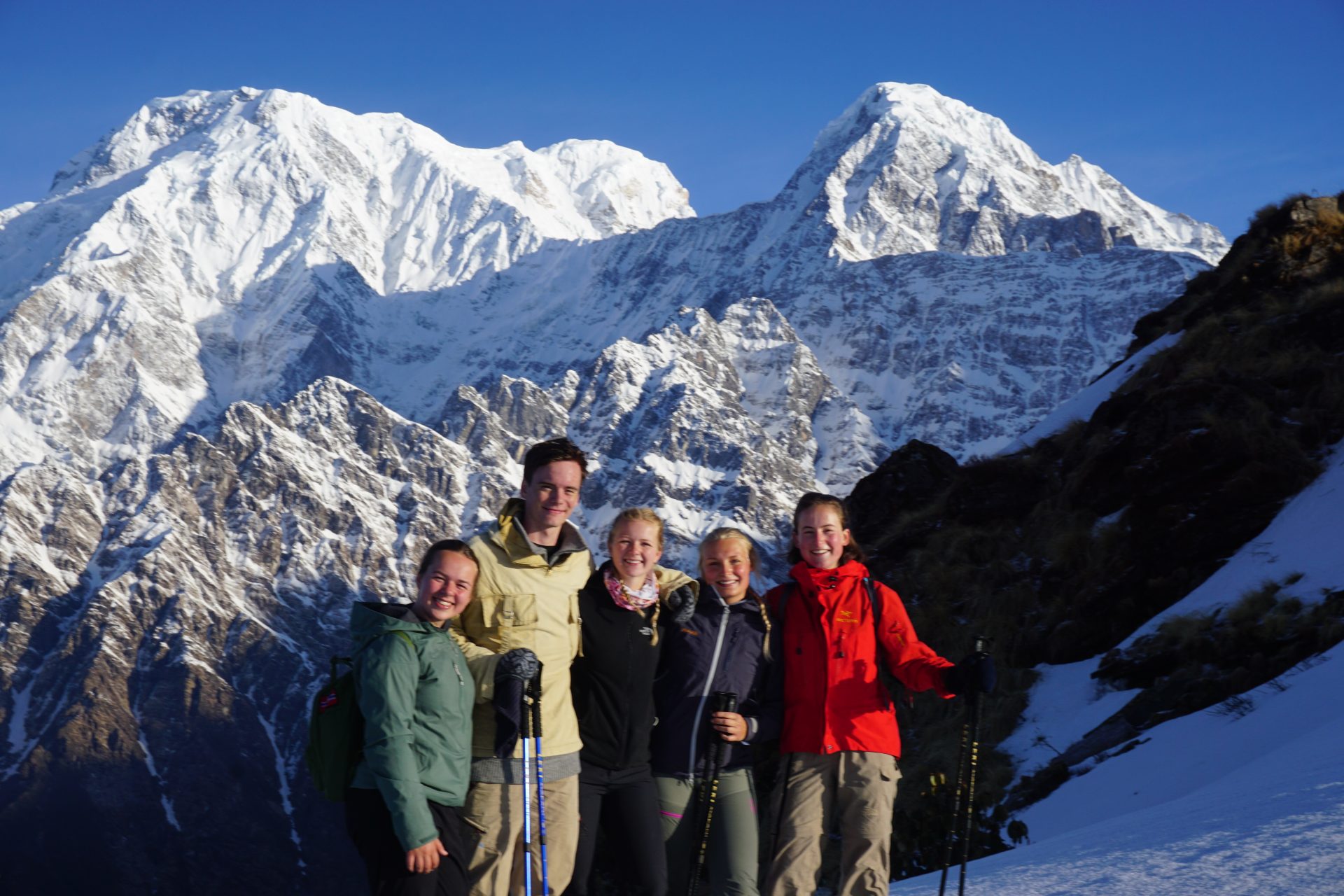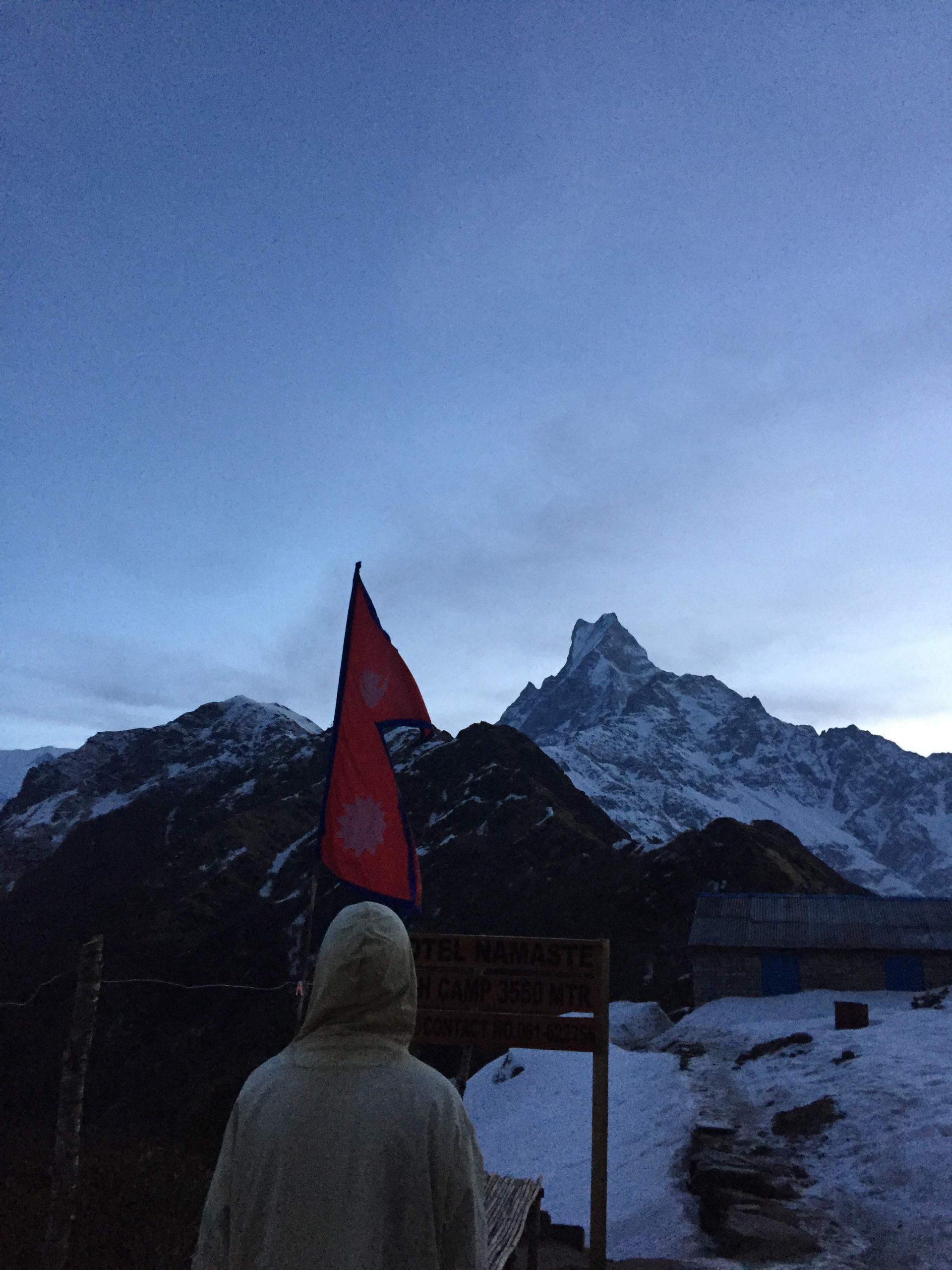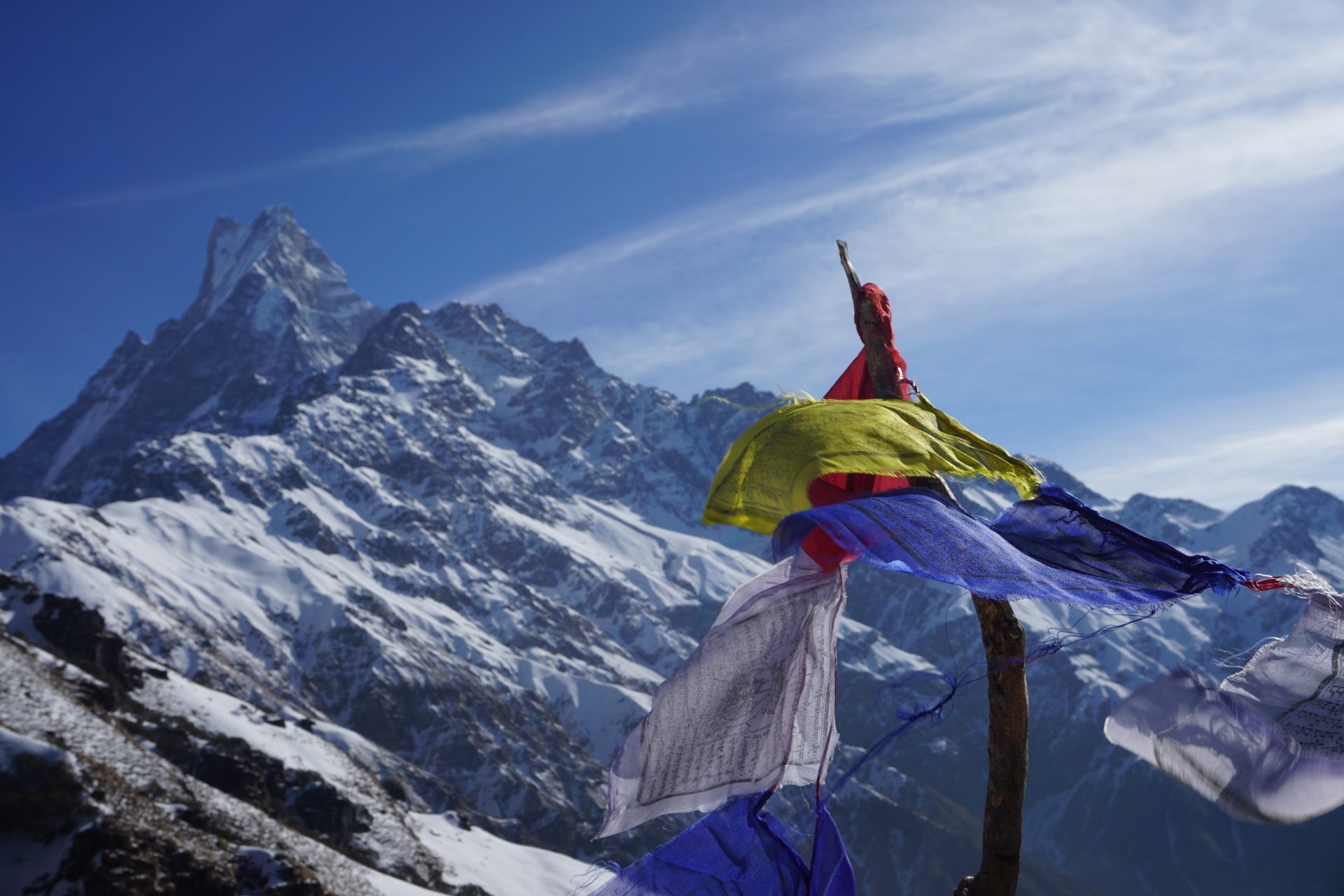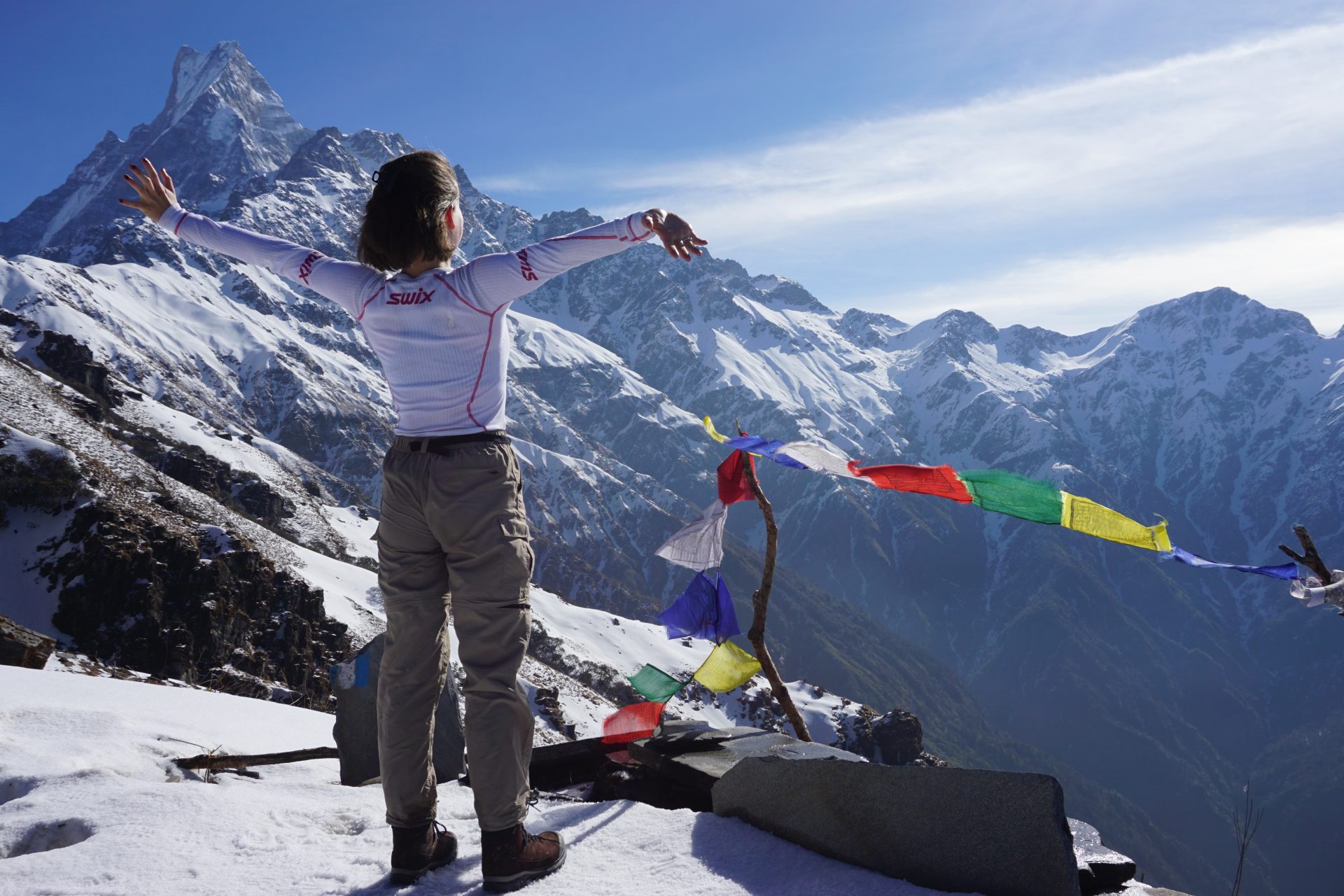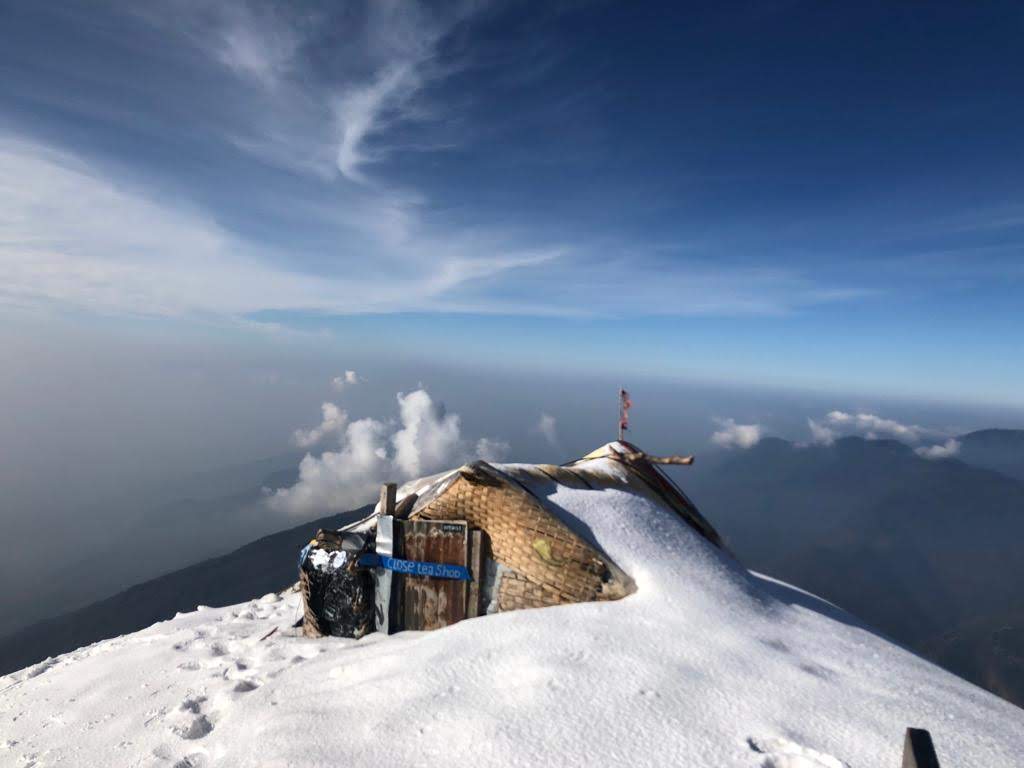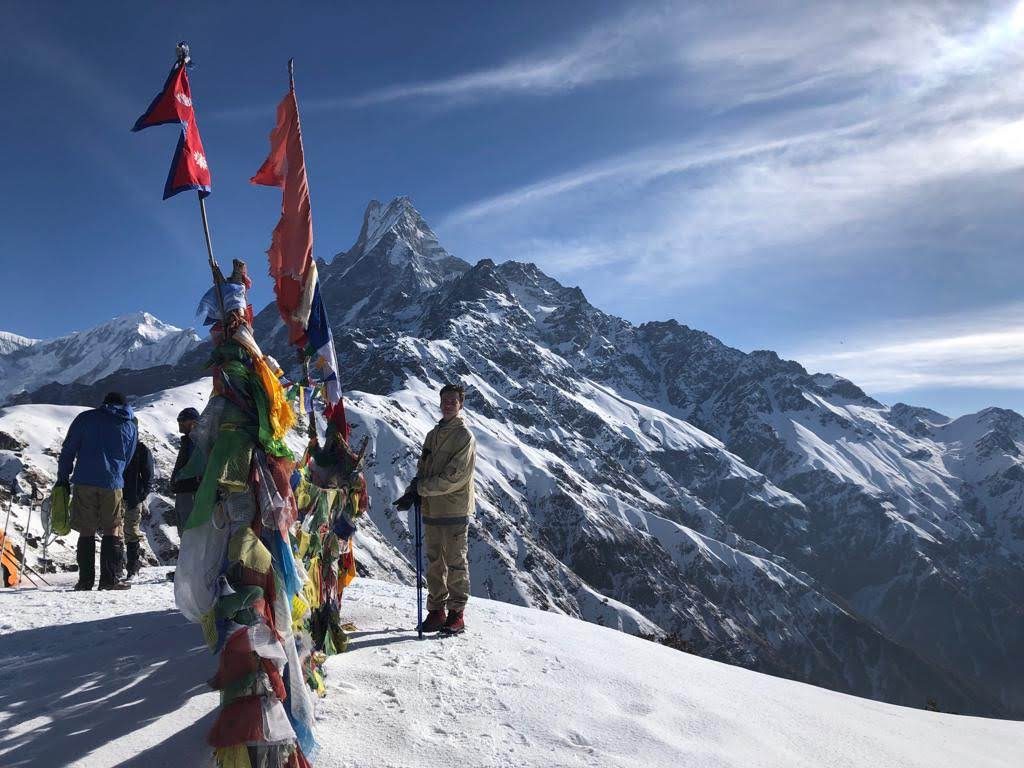
In between the lecture period and the group paper period, we got a long weekend to relax and do as we pleased. Most of our class went hiking whilst others travelled to other cities in Nepal like Chitwan or Kathmandu. I and five other students did the Mardi Himal Trek whilst others did the Poon Hill Trek. The Mardi Himal Trek has been written about on this blog before, but our experience on this trek was quite different from the group last semester, so here is our perspective on the trek during the Spring semester!
What to bring
We all packed in backpacks that were comfortable for trekking. Most of us packed in these backpacks going to Nepal, but some also bought a backpack here in Pokhara for under 3000 NPR (230 NOK), but keep in mind that the cheap price often compromises the quality of the backpack.
Under you find our packing list for the trek. This is not a perfect list for everyone, but it worked for us. Also keep in mind that we went on this trek during the Spring semester, which is colder than the Autumn semester, so the clothes you need will probably change depending on when you go. I highlighted the items we found especially useful and necessary.
- Sneakers
- Hiking boots. Personally, I only had sneakers brought with me and I was fine for most of the trip, but I struggled a bit at the very top due to snow so I would recommend bringing hiking boots regardless.
- Wool leggings and long/short sleeve
- Mittens
- Hat
- Warm sweater (most of us had a knitted thick sweater). I highlighted this one because it really does get cold at the top, especially during the night. It saved my life (maybe).
- Some T-shirts
- A water and windproof jacket
- Outdoor pants
- Sports bra
- Buff
- Wool socks and normal socks
- Underwear
- Toiletries: toothbrush, toothpaste, hair brush, hair ties, mosquito spray, lip balm, sun screen etc.
- First aid: plasters, blister plasters, pain killers, tweezer
- Walking poles. I cannot express how useful these were. Hiking for many days can be exhausting for your knees, ankles and hips so it’s nice to relieve some pressure by using walking poles. It is also a nice workout for your arms! Highly recommended!
- Microfiber towel. You can buy these everywhere in Pokhara for around 1000 NPR (70 NOK). Microfiber towels are very small, soak up liquids efficiently and dry very quickly. If you plan on taking a shower, I would recommend getting one.
- Sleeping bag. If you can’t bring your own from home, there are plenty of places to rent sleeping bags in Pokhara. We rented from Baba Trekking Shop for 600 NPR (45 NOK).
- Wet wipes. These were life changing. There were very few showers at the camps we stayed at (at least with a bearable temperature), so we made ourselves somewhat slightly cleaner with wet wipes.
- Card games. We got stuck because of bad weather a couple of times and to pass time we played cards. We also bonded with the workers at the guest houses through card games.
- Sun glasses
- Toilet tissue
- Headlight
- Map of the trek
- Compass
- At some places they charge you for charging your phone, so it might be nice to bring a powerbank.
- We bought breakfast, lunch and dinner at the camps, but it’s also necessary to bring snacks for some extra energy.
- Water bottles. All of us had two bottles each which we refilled from taps or melted snow at the camps. We also bought chlorine tablets which we put in water to make it safe to drink. In that way we didn’t have to buy water bottles on the trek and saved both money and the environment!
Random dogs followed us at various times throughout the trek. One dog even waited for us at Deuarali overnight!
We mostly walked in fog, but we thought that just added a mysterious vibe to the trek.
The Route
We ordered a jeep from Tuki Resort to Kande (1700 meters above sea level) for 500 NPR per person. From Kande we spent about 3 hours to get to Deurali where we got a 5 person’s bedroom for the 6 of us. The next day we then walked to Forest Camp in about 4 hours where we had lunch before we walked for another 2 hours to Low Camp at 2990m to eat dinner and stay overnight. On the third day we spent about 3 hours to High Camp which lays on 3550m and spent the whole afternoon playing cards, taking pictures and resting. On day four we got up at 04.45 to catch the sunrise from the viewpoints at around 4000m. One the same day we walked all the way down from the view points to Sidhing and took a Jeep home to Lakeside from there. We asked one of the workers at High Camp to call a jeep for us so when we got down to Sidhing all we had to do was to get in the jeep and enjoy a very bumpy ride home.
View from Deurali.
Where we slept at Low Camp.
Panoramic?
High camp
Altitude Sickness
Altitude sickness can really be a real bummer for the trip and should be taken seriously if experienced. Keep in mind the Norwegian Mountain Code that states: “don’t be ashamed to turn around”. If you start feeling sick, you will for sure not feel better by continue walking. Either rest for overnight or turn around. Even though we made sure to always walk very slowly to minimise the chances of feeling sick, one of the members in our group still had to turn around just above Low Camp at approximately 3000m. Common symptoms of altitude sickness are nausea, vomiting, headache, difficulty sleeping, shortness of breath and increased heartrate. I was very happy we spent such a long time at High Camp to get some time to adjust to the thin air. When we reached 4000m, I think most, if not all, members of our group felt effects of the thin air.
Sunset at High Camp
05.45 a.m on our way to the View Points.
Sunrise.
High Camp.
Trekking hacks and tips
- Bring Pringles and use the empty box as a trash can when it is finished.
- Be sure to know which camp you are at! There are many small camps and guest houses in-between the main ones and people working at these camps said we had arrived at our destination even though we had not. There is nothing bad with staying at these smaller guest houses, but it is a bummer to wake up the next morning to find out that you must hike for longer than planned.
- We did not have a guide and we didn’t feel like we needed one either. If we had questions, we asked people working at the camps we stayed at. Other travellers were also very helpful. The path was also easy to follow as many stones and trees were marked white and blue to show the direction.
- Take small steps to save energy!
On a last note I just want to say that going on this trek is not as exhausting and tiring as it might sound like. Some of us were quite sceptical to this trek as it is quite long and steep, and we thought we would be absolutely exhausted by day 2. For us, the key was to take many breaks, let the slowest one at the time walk in front, and listen to and respect each other’s needs. We had a really good time and I recommend people to do this trek as well to get a new insight and perspective on Nepali culture and way of living!
Here we see Fishtail in the background at almost 7000 meters.
At the top! Upper View Point
-Malene-
